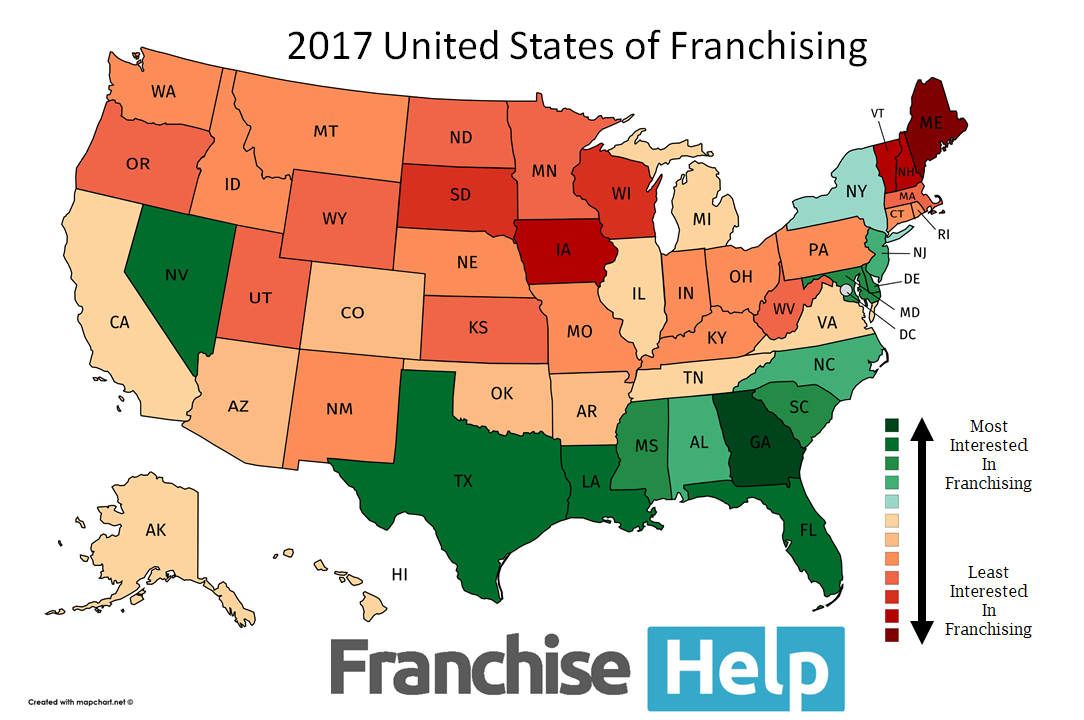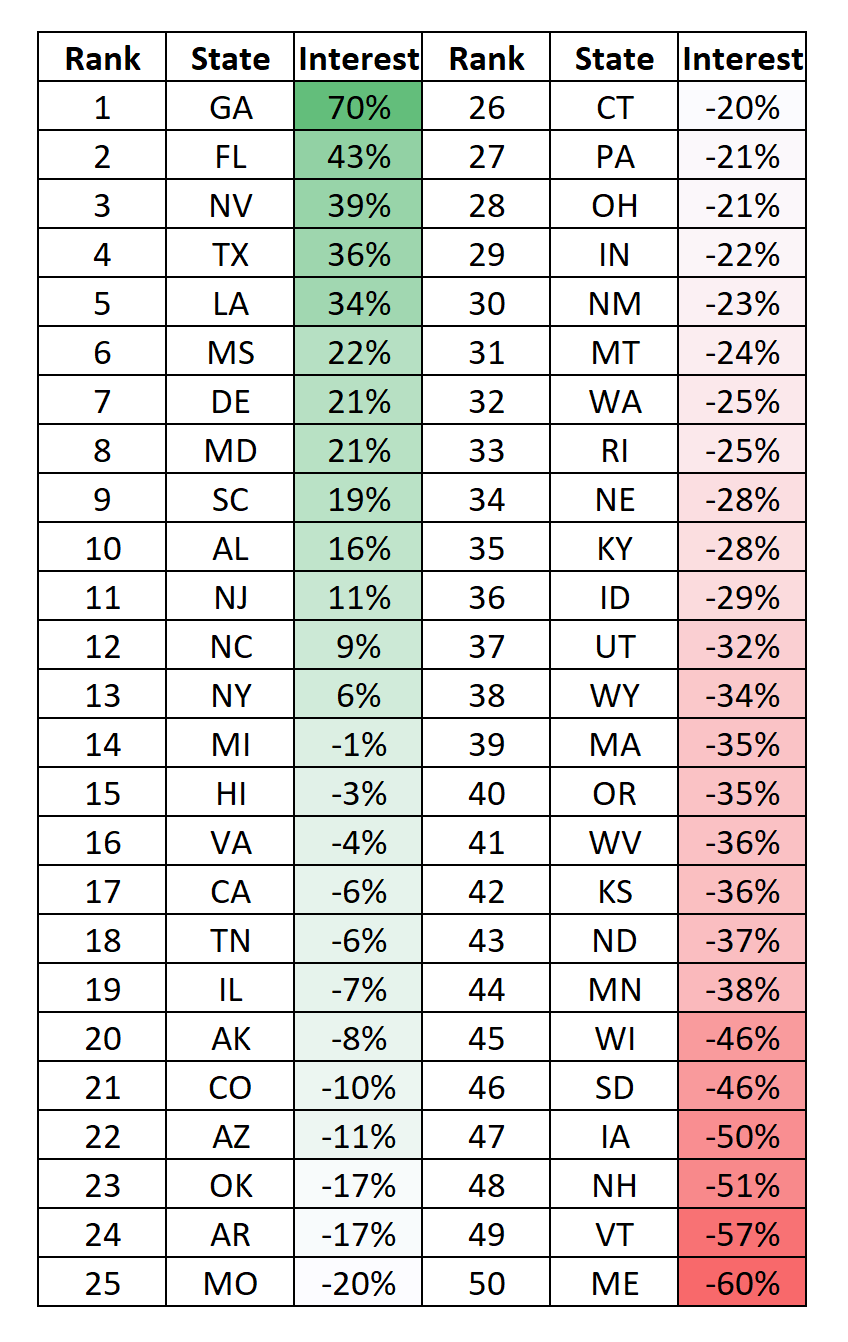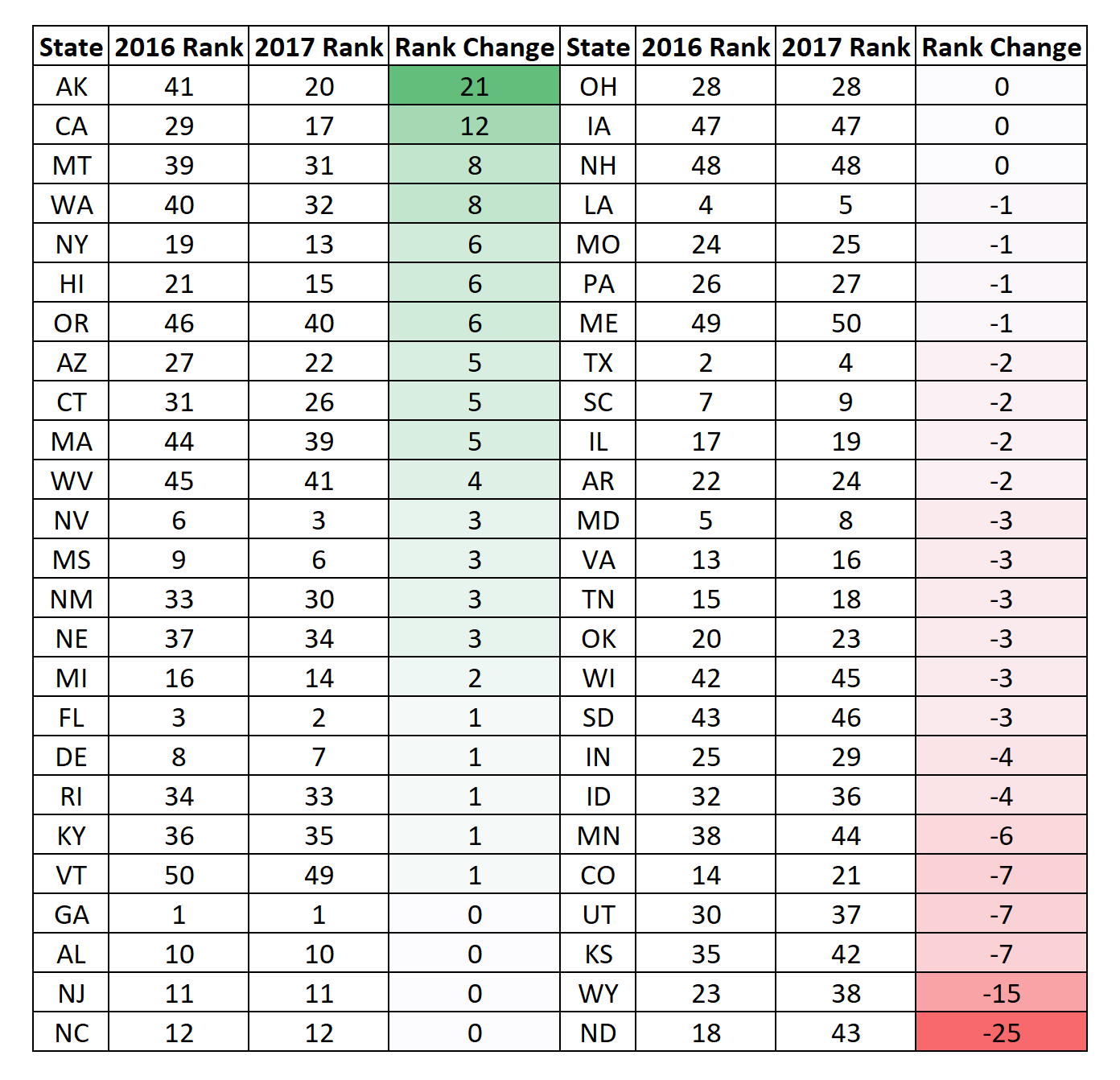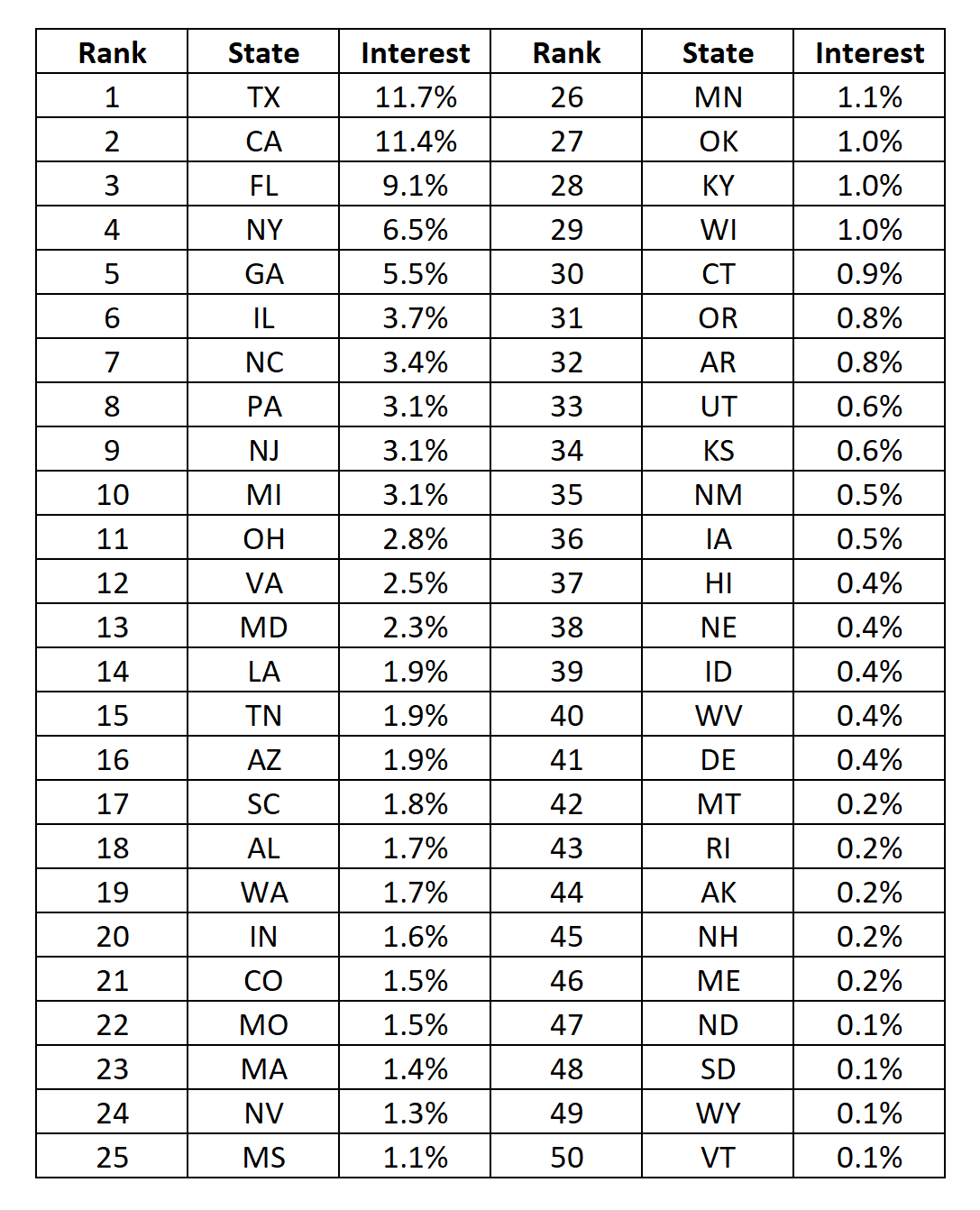Navigate quickly
Introduction
In the past 12 months, just under 5.4 million people have visited FranchiseHelp.com, the internet’s leading resource on becoming a franchisee. Given the sheer volume of Americans seeking information about franchising from us, we’re in a unique position to look at how this breaks down across the nation.
At the highest level, here are the most interesting takeaways from this year's analysis:
- The erosion of the middle. When we first published our rankings two years ago, we noticed that there was feast and famine when it came to franchise interest. In the past two years, things have only gotten more exaggerated. There are 5-10 states who really love their franchises and 25+ that really aren't big fans.
- The Franchise Went Down to Georgia. For the second year in a row, Georgia leads the way in our annual rankings. While last year, the Peach State's lead over the second place state (TX) was fairly significant, Georgia extended their lead even more this year. Georgia only makes up 3.2% of the U.S. population, yet they account for 5.5% of all interest in franchising.
- Nevada, the sore thumb. Once you get outside the East Coast and the South, interest in franchising wanes significantly. Except for the Silver State that is. When you see the map, you see a state that has an inexplicably high interest in the business model. Franchises looking to head West would be well-served starting there.
Without further ado, here’s the 2017 United States of Franchising.
State by State Rankings
Let’s start with a look at how states compare to each other in terms of their interest in franchising. The more green the state, the more people in that state are interested relative to that state’s population.

(If you’re interested in the methodology for our analysis, scroll down.)
Each state’s relative interest in owning a franchise:

As we mentioned above, interest in franchising in the U.S. is dominated by the South, specifically Georgia, Texas, Florida, and Louisiana. It is interesting to note that this year only 13 out of 50 states have a positive relative interest.
2016 vs. 2017 Ranking Changes
One of the most surprising thing about this year’s analysis was how much certain states moved in the rankings. When you compare last year’s rankings to this year, here are the changes:

On the risers and fallers view this year, you see a couple states moving quite a bit.
Alaska, not usually seen as a franchise hotbed, raised their ranking 21 spots, going from the bottom 20% of states all the way to the top 20! California's rise makes a bit more sense, as they fell quite a bit in last year's rankings and are headed back toward their original location.
Of the most noteworthy fallers, North Dakota fell 25 spots from the top 20 all the way to 43rd. North Dakota has had one of the more interesting economies amongst the states over the last few years, given it's reliance on the energy sector. Perhaps the swings in energy prices has an effect on the entrepreneurial spirit in the Peace Garden State.
2017 Absolute Franchise Interest
Just because a state has low relative interest doesn’t mean people there don’t want to open franchises. Here is the absolute interest in franchising by state:

It’s truly shocking to see that only 7 states account for over 50% of the country’s total interest in franchising! This is a combination of high population / low relative interest states California, New York, and Illinois as well as high interest states Texas, Florida, Georgia, and North Carolina.
Methodology
This analysis represents two different types of interest in franchises, relative and absolute interest. For the purposes of simplification, any reference to simple “interest” is actually a reference to relative interest.
Absolute interest is simply a breakdown of the total number of leads that FranchiseHelp has generated irrespective of the population of the geography in question.
Relative interest is a comparison of the number of leads that FranchiseHelp has generated compared the population of that given geography. The formula looks like (Percentage of Total Leads – Percentage of U.S. Population) / Percentage of U.S. Population.
As an example, let’s look at the state of California. As far as absolute interest, California represents 11.4% of all the lead generated by FranchiseHelp. (It ranks 2nd behind Texas.) With regard to relative interest, this number is compared to the fact that California has 12.2% of the U.S. population. Therefore, the relative interest is (11.4 – 12.2) / 12.2 = -6%.
The breakdown of leads generated comes from FranchiseHelp’s proprietary data. State populations are from the U.S. Census Bureau’s 2016 population estimates found here.
Further Reading
A brief quiz if you're interested in becoming a franchisee
How FranchiseHelp generates leads for franchises all over the U.S.
FranchiseHelp Lead Generation Resource Center -- Learn everything there is to know about how online lead generation is successfully done for your franchise.
Any questions, clarifications, or comments, feel free to shoot us a note. We’d love to hear from you.
If you’re a member of the media and interested in the full data set or other information regarding the United States of Franchising, submit a request here and we’ll get back to you ASAP.
This report was prepared by Eli Robinson. Eli is the COO of FranchiseHelp’s parent company, Metric Collective.
Ultimate franchising guide
All you need to know as a first time franchisee: Step by step guidance from experienced franchise professionals.

















